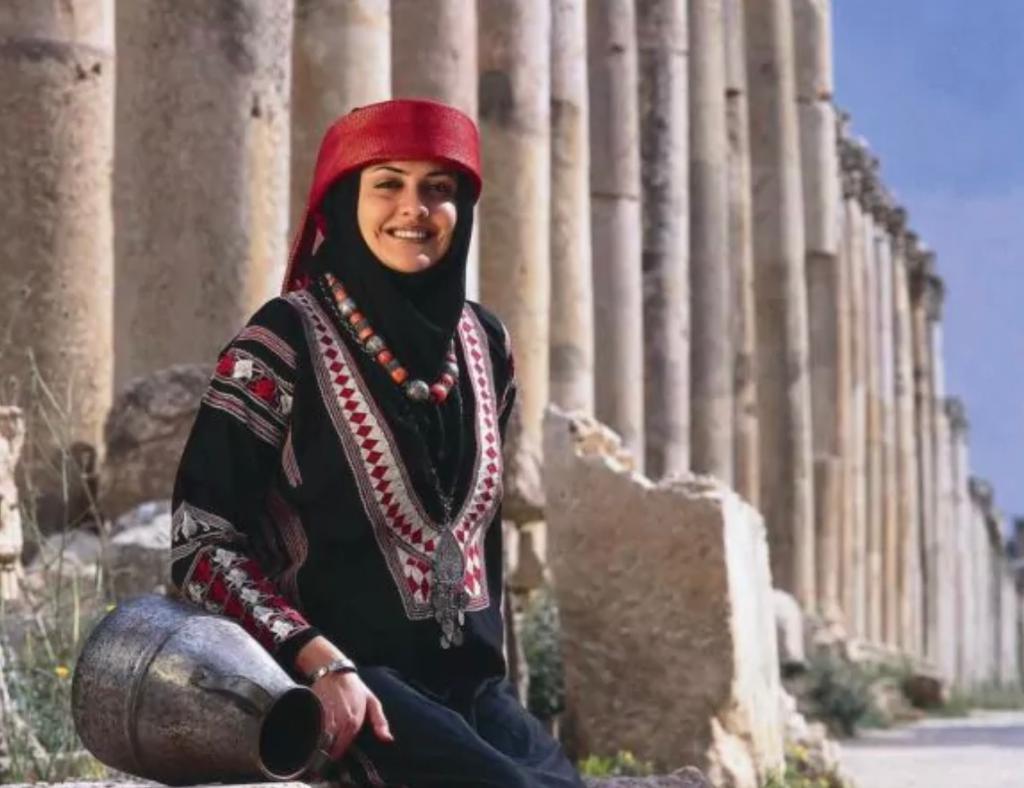Jordanian Folklore: A Close up of Its Enchanting Tapestry

Photo: Pixabay
By: Eman El-Ajlouni / Arab America Contributing Writer
The vast and varied collection of customs, songs, dances, stories, and creative manifestations known as Jordanian folklore has been passed down through the centuries in Jordan. It offers insights into the way of life, values, and identity of the country and its citizens by reflecting their cultural legacy and history. Jordanian folklore covers a wide range of topics, including music, dance, costumes, stories, and customs.
Significant Elements of Jordanian Folklore
Traditional Music and Dance
Jordan’s traditional music is distinguished by a blend of Bedouin, Arab, and Levantine influences. Traditional performances often involve instruments like the Oud, Rebab, Mijwiz, Arghul, Bagpipes, and Tabla. Folk dances, such as the “Dabke,” a line dance frequently performed at weddings and other events, are important to Jordanian culture. The Dabke is a leg movement that is characterized by loud ground-pounding sounds that are accompanied by singing and folk music. Twenty different varieties of Jordanian Dabke exist; each area of Jordan has its own special Dabke.
Dress and Costumes
Traditional Jordanian clothing combines urban and Bedouin styles. The distinctive clothing of the Bedouin has exquisite needlework and vivid colors. Traditional clothing for women frequently has handmade designs of dresses, while veils, jewels, and headscarves complete the look. Men’s clothing includes items like the Bisht. A flowing robe worn on special occasions along with Shemagh, a traditional headdress worn by men, along with the Agal, a black cord, worn doubled, used to keep the Shemagh in place on the wearer’s head. These clothes not only serve as a cultural statement but also highlight the pride and identity of the Jordanians.

Photo: Royahnews – A type of Jordanian women traditional clothes
Folktales and Legends
Jordan’s folktales are an actual treasure trove of cultural legacy, reflecting the country’s rich history and diverse people. These stories, frequently woven with entrancing humor, love, and bravery, reflect the customs and values of the Jordanian people. Jordan’s folktales offer an enchanting window into the essence of the country. Passed down through centuries as treasured tales that never cease to inspire and inform. Much like the timeless legends of Al-Khader (Saint George) and the Seven Sleepers.
Traditional Crafts
Jordan’s Folklore also shows up in traditional arts and crafts. As a colorful representation of its rich historical and cultural heritage. The skills, manufacturing, and traditions seen in these crafts, passed down through the years. Which helps to preserve the core of Jordanian identity. Each skill reflects the history and influences of the area. From the elaborate ceramics decorated with geometric designs and vivid colors to the mesmerizing Bedouin weaving that creates complex fabrics. Traditional basketry is practiced by highly skilled workers who use palm fronds to create useful and ornamental items. While embroidery demonstrates the expertise of needlework via the creation of elaborate designs on textiles.
Works of art that incorporate cultural themes into practical goods and architectural features include silversmithing, woodworking, and stone carving. Historical structures and mosques still preserve their careful attention to detail, as seen by the traditional leatherwork and ceramic tile craftsmanship. These crafts serve as more than simply creative endeavors; they also serve as a live link between current Jordanians and their ancestors. The history of Jordan’s traditional craftsmanship remains preserved and promoted via efforts to assure its survival in the modern world.
Traditional Celebrations
Jordan’s rich cultural heritage may be seen in its traditional celebrations. Events like marriages, births, and religious holidays commemorate age-old celebrations and practices. For instance, weddings are joyful events with dancing, music, and eating, frequently accompanied by traditional Dabke performances. While religious holidays like Eid al-Fitr and Eid al-Adha are marked by communal prayers, meals shared with others, and charitable deeds. Birth celebrations gather families and friends together to celebrate the arrival of a new member. These events not only help Jordanians reconnect with their rich heritage but also strengthen the bonds of unity and common identity across its many populations.
Culinary Customs
Jordan’s culinary customs take you on a tasty tour of the country’s cultural history. The cuisine offers a variety of dishes that reflect the many areas and populations, and it is a beautiful fusion of Middle Eastern elements. Jordanian food is an example of the skill of combining spices and tastes, from the famous “Mansaf,” a fragrant dish prepared with tender lamb, rice, and yogurt sauce, to the flavorful “Maqluba,” a layered dish of rice, veggies, and meat. Street food favorites like Falafel and Shawarma provide fast, flavorful bites, and desserts like Knafeh and Baklava provide meals with a sweet finish. The sharing of meals is another aspect of food traditions reflecting the welcoming hospitality that Jordanians are known for.

Photo: Depositphotos – Mansaf Jordan’s traditional dish
Conclusion
In conclusion, Jordanian folklore is a rich and complex tapestry woven from centuries of history, culture, and custom. It comprises a broad variety of artistic manifestations, from age-old music and dance to captivating folklore and folktales. By combining Bedouin, Arab, and regional elements, Jordan’s folklore represents the many different forces that have influenced the country. Jordanian folklore offers an insight into the beliefs, identity, and common experiences of its people via its tales, costumes, crafts, and celebrations. It’s a colorful symbol of the past that lives on in the present, spanning generations and promoting a sense of accomplishment and unity among Jordanians.
Check out Arab America’s blog here!








